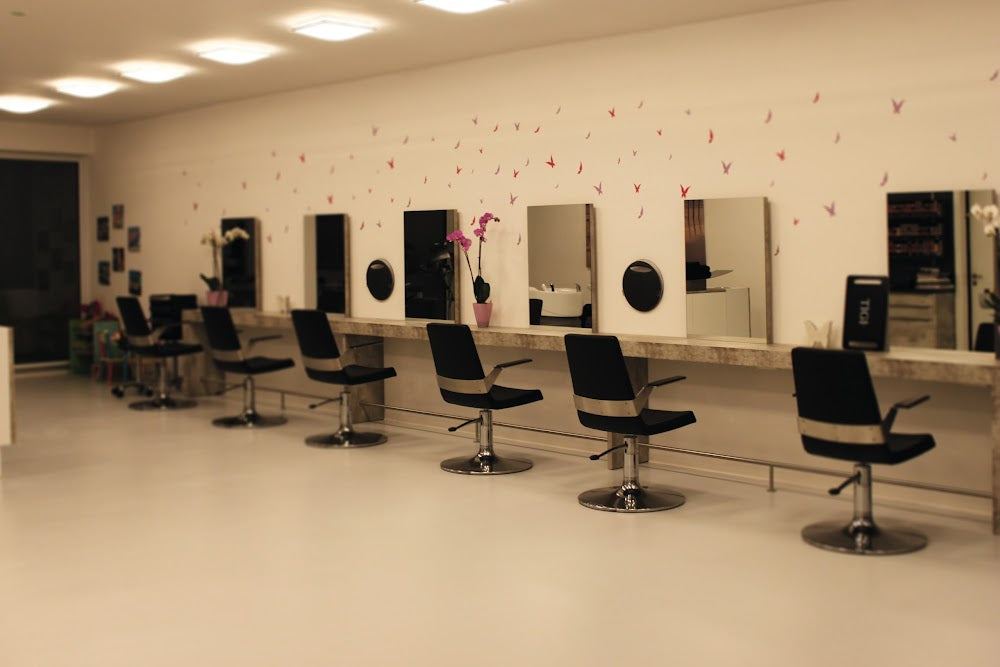
How Much Does it Cost to Open a Salon in the UK?
Share
Opening a salon in the UK can be both exciting and daunting. Rising energy bills, high street rental prices and ever-increasing client expectations make it crucial to understand the true costs before investing. With careful planning, however, a well-structured budget not only protects your business but also positions you to attract loyal clients and maintain compliance from day one.
What are the typical start-up costs to open a salon in the UK?
Start-up costs for a UK salon vary widely depending on size, location and services offered. For an independent hair or beauty salon, initial outlay usually ranges between £15,000 and £50,000. This includes securing premises, refurbishing interiors, installing equipment and covering the first few months of operational expenses. Larger salons or premium beauty clinics in major cities can see costs exceed £100,000.
The biggest expense is often the lease or purchase of premises. London and other major UK cities carry higher rental costs than market towns or suburban locations. Renovations also require substantial investment to create a safe, professional and compliant environment. From plumbing for backwashes to fire safety systems and treatment room fit-outs, these are essential rather than optional.
Once the physical space is ready, equipment purchases follow. Hairdressing chairs, backwashes, beauty couches, mirrors and reception furniture all need to meet commercial use standards. UK salon owners also face initial outgoings for licences, insurance, branding and marketing campaigns to establish presence in their community.
How do UK regulations and compliance affect salon opening costs?
Compliance in the UK is more than a legal tick-box; it carries significant financial implications. Before opening, salons must register with the local council, comply with health and safety regulations, and often undergo inspections.
PAT testing and electrical safety
All electrical items must undergo Portable Appliance Testing (PAT) to ensure client and staff safety. This includes styling tools, dryers and treatment devices. Costs vary by region but expect £1–2 per item tested annually.
Fire safety and building compliance
Fire extinguishers, emergency lighting and smoke detectors must meet British Standards. If renovating, building regulations approval may be required, adding further expense.
Licensing and local authority fees
Salons offering treatments such as massage, piercing, or advanced aesthetics may need additional licences. Fees depend on the local authority but typically range from £150 to £500 annually.
Employment and training compliance
If employing staff, UK businesses must factor in National Insurance contributions, pension auto-enrolment and mandatory health and safety training. While not always obvious in the start-up phase, these are non-negotiable long-term costs.
How much should you budget for salon equipment and furniture in the UK?
Salon furniture and equipment form the backbone of any professional set-up. A standard two-to-three chair hair salon typically requires between £5,000 and £12,000 in initial equipment spend.
Hairdressing stations and backwashes
Each styling chair can cost several hundred pounds, while commercial-grade backwash units with plumbing can cost £1,000 or more each. Investing in durable, ergonomic equipment ensures longevity and enhances client experience.
Beauty and treatment equipment
If offering beauty services, budget for couches, trolleys, magnifying lamps and sterilisation equipment. For aesthetics clinics, costs rise further with advanced machines and devices, which may also require specialist insurance.
Reception and waiting areas
Clients form impressions the moment they step inside. Reception desks, seating and lighting design should therefore not be overlooked. Expect to spend £2,000–£5,000 depending on quality and customisation.
What are the hidden costs of running a salon in the UK?
Many salon owners underestimate ongoing operational costs, which can be just as significant as start-up investment.
Energy and utilities
Rising UK energy bills impact heavily on salons, particularly those operating multiple dryers, heaters and lighting systems. Energy-efficient equipment can lower long-term bills, but upfront costs are higher.
Business rates and VAT
Premises with a rateable value above the small business threshold may be subject to business rates. VAT registration, required once turnover exceeds £90,000, also adds 20% to pricing and cash flow planning.
Marketing and software
From social media advertising to online booking systems, digital tools are essential for client retention. Annual costs can easily reach several thousand pounds.
Insurance and legal protection
Public liability, treatment risk and employer’s liability insurance are non-negotiable in the UK salon sector. Premiums vary but typically cost £500–£1,000 annually depending on services.
How can UK salon owners plan financially for long-term success?
Planning beyond the opening day is vital for survival in a competitive market.
Building a realistic financial forecast
UK salon owners should forecast cash flow for at least 12 months, including wages, stock, utilities and tax liabilities. This prevents surprises and allows for seasonal fluctuations.
Creating a client retention strategy
Investing in loyalty programmes, rebooking incentives and client care training reduces reliance on constant new bookings. In the UK, repeat business is the foundation of profitability.
Sustainable growth and expansion
As environmental awareness grows, many clients prefer salons with eco-conscious practices. From LED lighting to refillable product stations, sustainability investments can reduce costs and attract a loyal clientele.
Conclusion
Opening a salon in the UK requires far more than a creative vision. It demands a clear understanding of costs, compliance and ongoing financial pressures. By preparing realistically for everything from rent and refurbishments to PAT testing and rising energy bills, salon owners can launch with confidence and build a business designed for long-term success
